Foreword
…Innovators have found themselves facing a dilemma. Many of the challenges they work on spread across borders. One-country solutions are often likely to be sub-optimal. At the very least innovators need to learn from others facing similar dilemmas. But it’s even better if they can pool resources, data and capacities… As a result, we are in an era when what is sometimes called micro or mini-lateralism has become more common: nations or cities joining together in smaller groups to solve problems.
This report is very timely and describes out an important aspect of mini-lateralism: how a new field of cross-border innovation is evolving. It documents a remarkable range of initiatives springing up around the world, in very diverse fields and points to the possible implications…
A distinctive spirit marks many of these initiatives… There’s a striking commitment to openness – most of these initiatives are transparent and many use open data in its various forms… Another part of this spirit is the commitment to the principles of collective intelligence – the idea that the best solutions will probably come from outside government itself… There’s also a distinctive democratic impulse behind many of these initiatives – a desire to engage citizens in the work of solving problems…
None of these initiatives is easy. Any kind of innovation in the public sector requires the fuel of authority, resources and skills to make it happen, and these are bound to be harder to mobilise when multiple governments are involved. They’re also hard because, the closer you get to action on any scale, the more obvious it becomes that some of the ideals of agile government are in tension with each other. Top-down missions can clash with bottom-up customer responsiveness; the desire to draw on evidence can clash with politics and with speed… But any reader of this report will soon get a feel for the energy, diversity and spirit of these new cross-border innovations…
So what does this all mean? And what challenges does it throw up? One, which the report identifies, is a challenge of skills… A second challenge is how to institutionalise this work… These are all arguments for nurturing this emerging field, and pursuing the recommendations made in this report. In particular, I’d highlight the value of reducing the friction and transaction costs involved…
This space of cross-border innovation will only become more important in the next decade. The advantages of faster learning, and pooled action to reduce risks and amplify benefits should be self-evident… This is set to be at least part of the future for effective innovation in the public sector, and this very welcome report shows how that might happen.
See print report for full foreword

Professor of Collective Intelligence, Public Policy and Social Innovation at University College London.
Introduction
The field of public sector innovation and related fields such as open government have long promoted the building of conduits for ground-up ideas and solutions, such as through democratic decision-making processes and collective intelligence. Likewise, experimentation is a key mode of innovation in governments and is gradually becoming a norm. Ideas and solutions derived from these efforts help government move beyond organisation-centric thinking and make it possible to test ideas in ways that promote learning and help keep risk levels manageable. The success of these efforts within countries and jurisdictions has led governments and their partners to apply similar approaches in cross-border and even global contexts.
This work has led to the identification of two leading governance approaches and associated case studies, as discussed below.
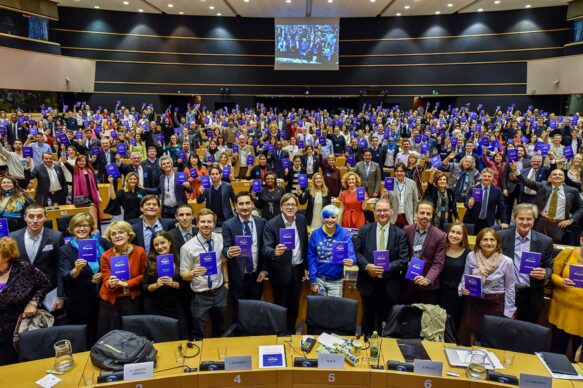
Theme 1
Surfacing ground-up insights and collective intelligence
Governments are working across borders to identify new ways to enable ground-up insights and solutions from stakeholders and the public. These efforts range from simple but effective dialogues to mass scale cross-border collective intelligence initiatives that contribute to addressing major challenges. These efforts are often preceded by mapping exercises to ensure all relevant stakeholders are known and involved.
The first report in this series focused on innovation bodies providing top-down or centre-out direction, and networks enabling horizontal linkages for collaboration. This second report highlights efforts that enable bottom-up flows of information across borders in order to bring forth ideas and perspectives.

Case Study
Deep Space Food Challenge
An international collaboration between the Canadian Space Agency and NASA that incentivises innovators to address gaps in the field of food production technologies to meet the needs of space exploration, which can also address terrestrial needs, such as reducing food insecurity on Earth. In October, initial prizes totalling USD 450 000 were awarded for ideas leveraging new technological advances that could feed astronauts on future space missions.

Case Study
Global Innovation Collaborative
A network and platform for collaboration through which city governments from around the world launch open innovation competitions and invite passionate innovators to deploy solutions in local testbeds. Its mission is to leverage challenge-based principles and collective intelligence to surface ideas and stimulate shared learning, with the goal of accelerating the economic recovery from the COVID-19 crisis and creating more resilient and sustainable cities.

Theme 2
Experimenting and testing across borders
The increasing complexity and interconnectedness of the issues affecting present-day societies has contributed to growing interest among governments and policy stakeholders in evidence-based policy making. This has in turn led policy makers in many governments to focus more strongly on experimental approaches. Small-scale tests can make innovation more tangible and less uncertain, as well as providing greater learning and feedback opportunities and lower costs of failure.
The work conducted by OPSI and the MBRCGI has identified three main layers related to innovative approaches in cross-border testing and experimentation that can help make sense of this emerging topic: 1) innovative spaces and mechanisms for testing and experimentation across borders, 2) real-world cross-border testing and experimentation, and 3) building a strategic layer for cross-border experimentation.

Case Study
5G-MOBIX
A cross-border collaboration for autonomous vehicle experimentation. It involves a collaborative, international network of partners from different sectors coming together to test 5G-enabled connected and automated vehicles across European borders and promote their large-scale deployment. The project includes two testing “corridors” between Portugal and Spain, and one between Greece and Turkey, as well as eight local urban testing sites in China, Finland, France, Germany, the Netherlands and South Korea.

Findings
Unpacking findings and lessons
In our first report, we discussed benefits, challenges, and success factors for cross-border in a broad sense, as well as for innovative forms of governing cross-border challenges.
The work for this second report has surfaced a number of benefits, challenges, and success factors related more specifically to surfacing insights and experimenting across borders, which has been informed by research, a Call for Innovations crowdsourcing exercise, an a series of workshops with experts and practitioners around the world.
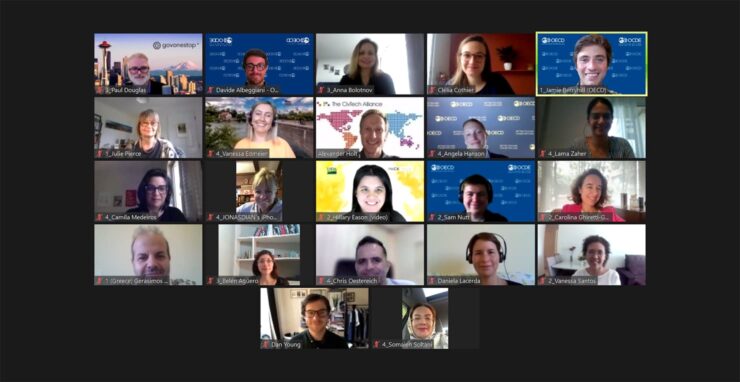
In terms of benefits, these types of efforts can help governments in gaining a better understanding of relevant cross-border ecosystem actors and providing conduits for ground-up engagement, including with the public. They can also help to ensure all voices are heard and considered, and also help to illuminate areas of opportunity for potential collaboration, as well as foster a culture of active listening and learning, promote adaptable and agile government processes, mitigate risk, and ensure policies and services better meet the needs of stakeholders, citizens and residents. The Call for Innovations cases identify these and other benefits.
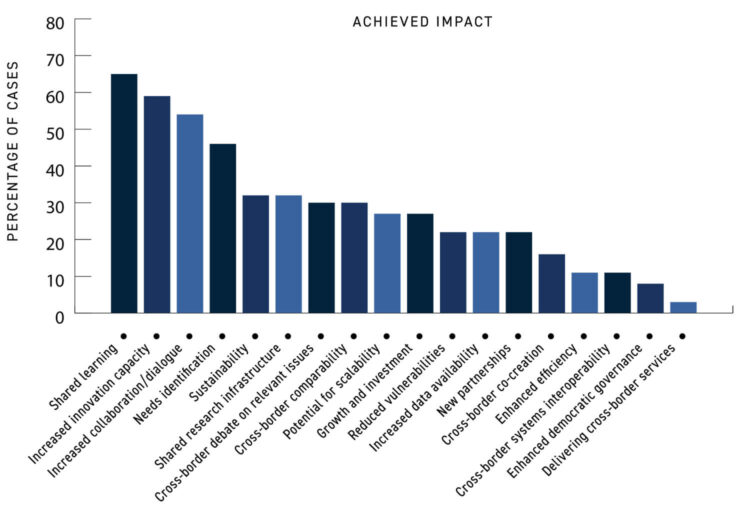
However, a number of challenges hinder the ability of governments and their partners to conduct ground-up efforts and to experiment with new approaches across borders. For instance, cultural resistance to such activities may lead actors to pursue closed, planned and linear paths that are not always sufficient to address complex, cross-border issues. Another key challenge is a lack of feedback and learning loops in testing new ideas, resulting in duplication and overlap of efforts. A common challenge for experimentation in particular is finding ways to scale successful small tests into larger more fully implemented initiatives. The challenges identified through the Call for Innovations cases and workshops mirrored these, and also included issues related to undeveloped ecosystems, competition among actors impeding collaboration, short-term outlooks, and lack of a facilitator to drive progress (see image below of workshop results).
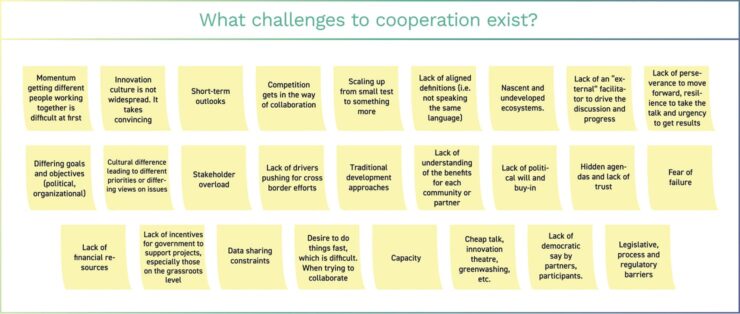
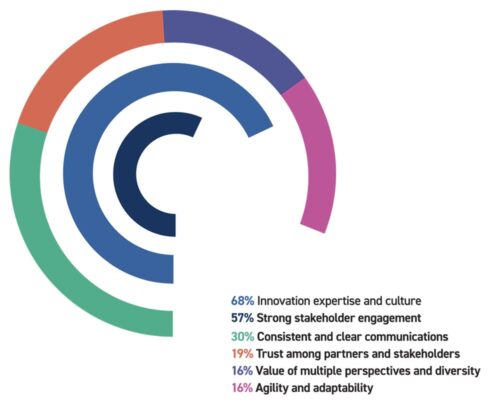
While these items serve as core challenges for cross-border bottom-up and experimentation initiatives, a number of success factors also have emerged. Some of these represent the converse of key challenges, and demonstrate how specific elements can serve as “make or break” components of cross-border efforts (e.g., a culture of innovation and openness). A functional factor is the ability and willingness to put in place mechanisms and spaces where ground-up insights can be surfaced (e.g., cross-border citizens’ assemblies, collective intelligence conduits, sandboxes).
Engaging all relevant stakeholders and actively communicating on progress are also major contributors. A foundational component of these efforts is time spent mapping out ecosystems and identifying relevant players. Finally, a vital component of success in collaborative efforts is establishing roles to work across borders to build relationships among relevant actors. The Call for Innovations cases and workshop findings echoed many of the success factors (see image to the left above for top relevant success factors from the Call for Innovations).

Recommendations
Five key recommendations have been identified for surfacing insights and experimenting across borders:
- Formalise the role of and build capacities for cross-border innovation facilitators. Invest in building capacities for facilitator roles to create the right spaces for ecosystem actors to work collectively across boundaries. To this end, convene actors for trust-based dialogue and sharing information and learning, thereby prompting challenging but necessary discussions, managing conflict and differences, and encouraging innovation by leveraging relevant innovation methods.
- Develop and execute ongoing approaches for mapping and engaging with cross-border ecosystem actors. Map cross-border ecosystems as a foundation for identifying and pursuing opportunities for strategic cross-border innovation, and develop a replicable and adaptable approach to continuous engagement that is consistent with relevant OECD instruments.
- Conduct cross-border activities using iterative practices and continuously learn from and communicate about them. Adopt a cross-border approach that allows for iterative adaptation and provide conduits for lessons learned and stakeholder feedback to be continuously considered and folded into activities. In addition, maintain open up two-ways channels of communication by consistently and openly reporting intentions, progress and setbacks, and allowing stakeholders and the public to provide input.
- Ensure cross-border initiatives are designed with scalability in mind, and establish a pathway for implementation and scaling. Consider scalability from the outset when embarking on cross-border innovation efforts and weave critical elements into the design of initiatives. Ensure a pathway to implementation by having processes and infrastructure in place that enable cross-border innovation efforts to be introduced incrementally to other parts of the system.
- Implement formal mechanisms to surface ground-up insights and experiment across borders. Intentionally and explicitly explore different types of cross-border mechanisms for surfacing ground-up insights and conducting experiments (e.g. citizens’ assemblies, open challenges, crowdsourcing and collective intelligence opportunities, testbeds).
While it is not possible to develop a recommendation to simply “build a culture of innovation and experimentation supporting cross-border innovation”, carrying out these five recommendations, coupled with the recommendations provided in the first report, and in alignment with the principles in the OECD Declaration on Public Sector Innovation, will over time help strengthen such a culture.
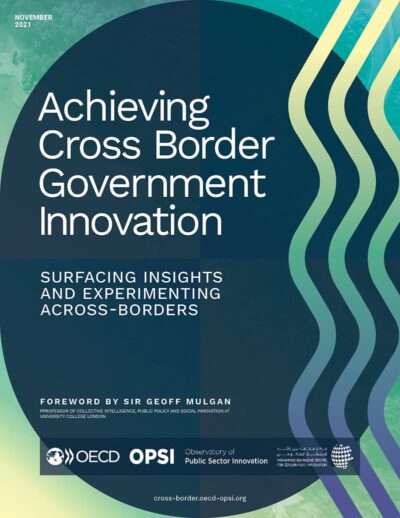
Download Print Report
Surfacing Insights and Experimenting Across Borders
